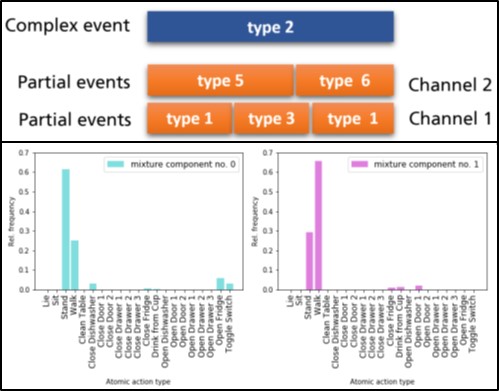Machine learning approaches in REACH
REACH implements a combination of wearable and ambient sensors for each Touchpoint along with a set of co-adapted Machine Learning elements. Machine Learning is used as a core element in multiple ways, e.g. to predict Activities of Daily Living (ADLs), recognize physical activity and behavior trends, detect deviations of patterns and critical situations, cluster and profile people, and inform the effectiveness of the assignment of certain interventions.
Two approaches are currently in the 3rd reporting period in the focus of development and refinement activities:
- CLINT, a novel method to discover the patterns of behavior change for a given intervention. In addition to this, our method learns the existing behaviors that explain the potential behavior change after the intervention. This allows us to predict how a person would behave if he or she received an intervention. We applied the model on two real datasets, one of which was collected within the REACH project.
- In the REACH context-specific data sets were obtained as part of trials and then prepared and annotated in order to be suitable especially for supervised machine learning methods used for the Activity Recognition Chain. The development of two different approaches for Activity Recognition that build on each other is described in the current deliverables. A demonstrator was built consisting of a data transformation pipeline to easily prepare the data taken from one test subject, feed it into the Activity Recognition Chain (ARC) and get the output of the performed activities. The available database covers now young and healthy persons as well as seniors and patients. The recent acquisition of a new data set focusing on older persons in a rehabilitation hospital setting allows adjusting the Machine Learning models further towards the target user group.



Leave a reply
You must be logged in to post a comment.